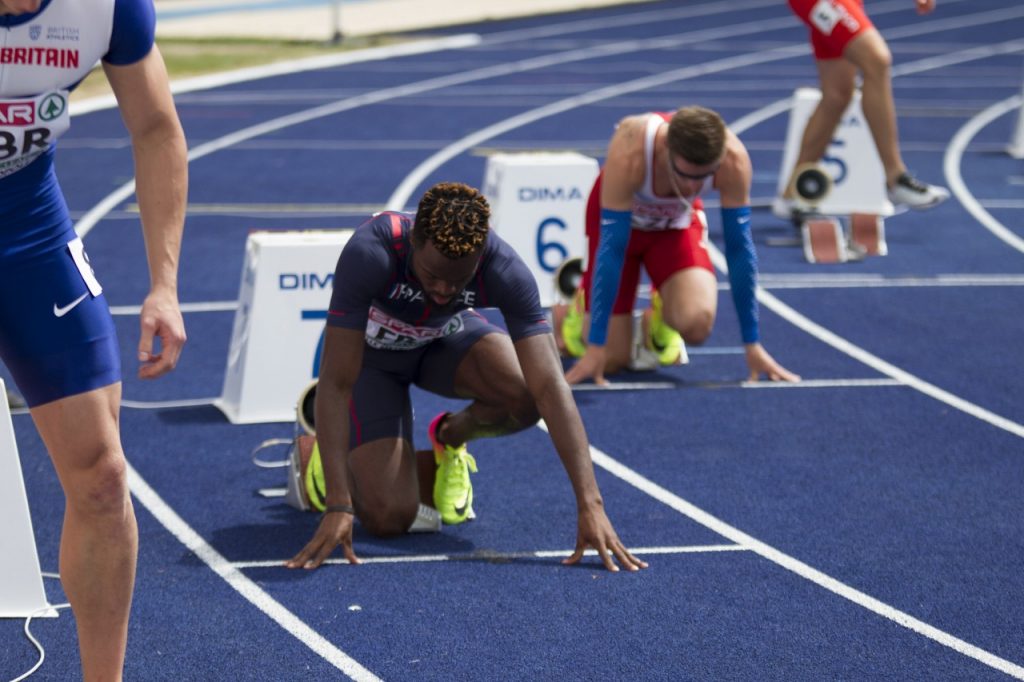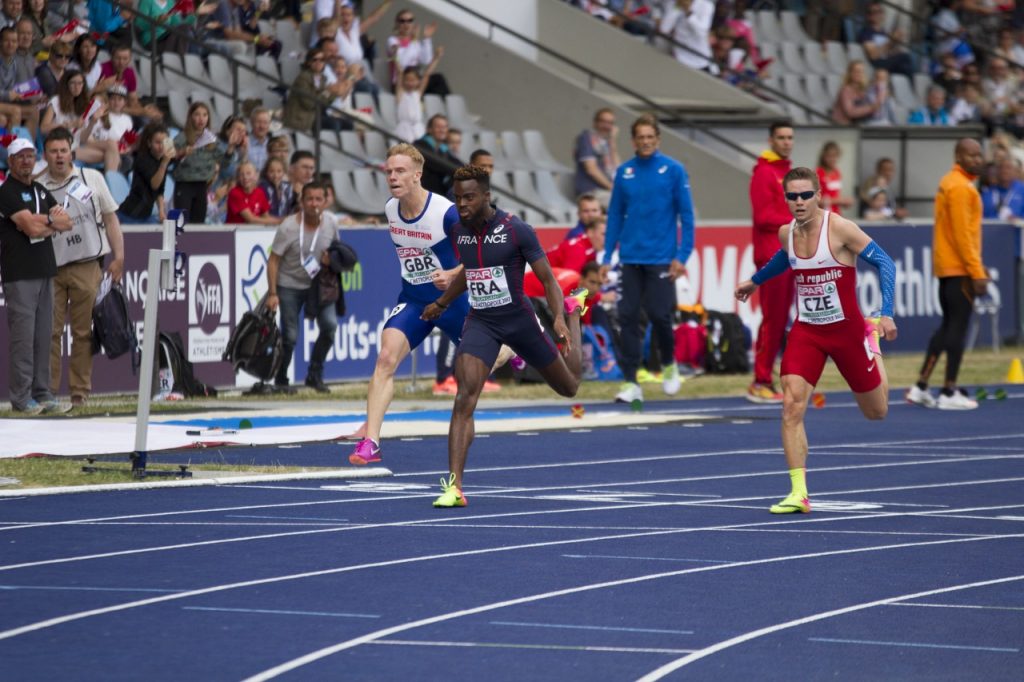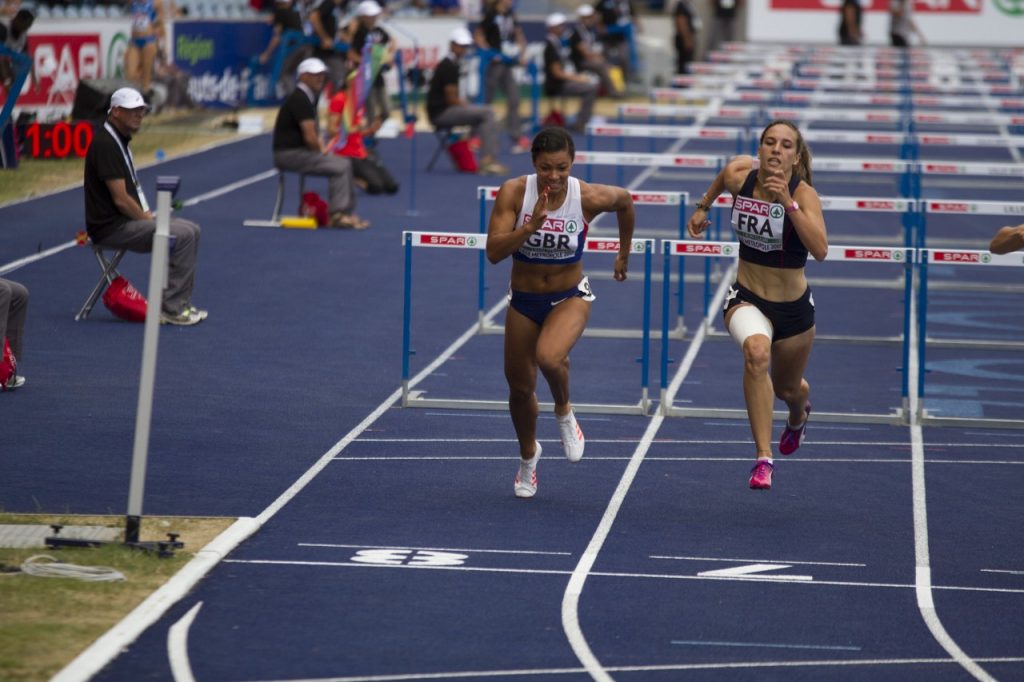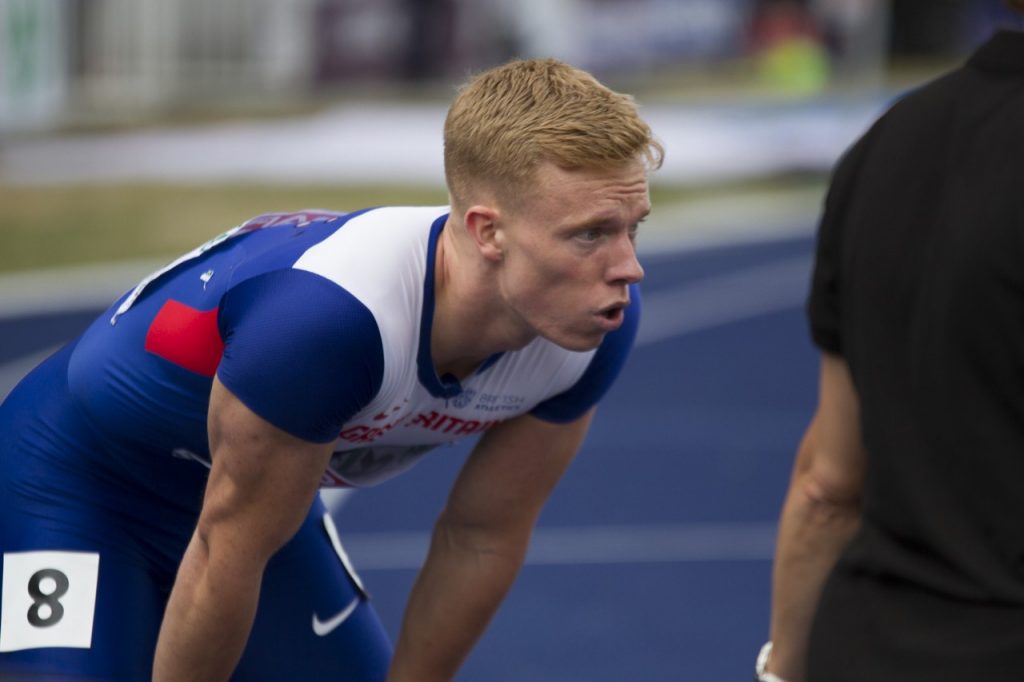
Getting people to run fast is the easy bit. Getting people to run fast at the right time in the right place is the hard bit.
Add in athletes with unpredictable stress reactions. Then add emotionally charged agents, parents, support staff who all have vested interests. Then add in logistics and environmental considerations of travel, holding camps and team hotels and federation demands. Media? Yep add in that too.
You get the picture. And we haven’t even got into training details. Speed and endurance needed to be fine-tuned and brought to optimum for that athlete. Along with stride length, stride frequency, strength, power, elasticity.
So you have got a whole bunch of moving parts that you need to bring together. It is like landing a fighter jet on a moving aircraft carrier. In a stormy ocean. In the middle of the night. While getting shot at by the enemy.
You get the idea. So here are my 7 secrets for creating the perfect taper and giving the athletes you coach a chance to become Championships Closers.
1. Focus on reasons to succeed, not create reasons to fail.
Ok you coach. So you are a perfectionist. And over competitive. And probably a little insecure.
All those personality peccadillos mean that as you begin to organise the taper into the major champs your brain will focus on the things you believe are missing.
You obsess and narrow in on the 20% of the race you aren’t happy with. And not the 80% of the race you know is good.
Look you have probably coached hard for 45 weeks. In that time, you will have built up general fitness, then specific fitness. You will have crafted race-specific skill sets. You will have increased physical capacities.
So why the hell are you letting your competitive anxieties draw you towards the reasons to fail, rather than reasons to win? Be confident in the portfolio of work you have built up consistently over 9 months.
Take away: Trust in your process. Get out on the track and polish up what you do have and don’t dwell on what you don’t have. This is not the time for panic workouts.

2. Use your taper to subtract not to add.
Tapering by definition means taking away. Sharpening. Narrowing. But instead of subtracting, many coaches add. Add more work. More information. More pressure. More effort.
A year-long training program is like a long-haul flight. The majority of energy is used to get the thing off the ground and up to flying height. The plane then works hard to get on and stay on the flight path. Then when it gets a certain distance out from its target it starts to coast. It starts to float towards its target. Too much energy at this stage and the target will be missed.
The final descent is what tapering into a champs should be like. It should, of course include technical and race specific work, but this work should be completed effortless.
The effortful work is done in the winter, refined and maintained during the racing season. 20 days out from the major championships lock in the date of the competition. Put on auto-pilot and cruise in towards that target.
Take away: In the taper, subtract rather than add.
3. Taper according to personality types
Henk Kraaijenhof describes a spectrum of athletes from warriors to worriers. These groups are defined by differences in their fight or flight response to stress, governed by hormonal and neurotransmitters factors.
So should we taper this vastly different groups the same? Probably not.
The worriers are the ones that 3 weeks out of competition are checking entry lists and predicting lane draws. They are downloading weather apps for long range forecasts. They are living in their heads, with their foot on the brain accelerator. Calculating. Speculating. Burning up adrenaline. The last thing you want to give these guys is more information to worry about. Your job here is to simplify and de-stimulate.
The warriors? These guys are competitive beasts. The only problem being they don’t really show up unless it is on the big stage. These are the guys that you are going to have to remind that there is World Championships on to get some good workouts out of them. They have probably made social plans so a gentle reminder of the date of the first round will help them. These guys have their foot on the brain brake. They will need stimulated. It might not do any harm to talk about how good their competitors look. It might not do any harm to have a bad workout to scare them. Your job is to create a little fear and get their competitive side going.
Take away: Know what type of stress responder you have in front of you. And taper your information, environment and communication accordingly.

4. Padlock the doors to the excuse factory
Winning Championships medals is hard. The guys that do that are hard physically. And even harder mentally. There are many that aren’t prepared to to face the long lonely road to championship success. And it needs to be lonely. And hard. And we have to create the situation where there are no ways out.
I liken it to placing the athlete in a room with the doors all closed. Outside of the room is an excuse factory. I think I might be injured. I feel sick. Athlete X has a better lane draw than me. Athlete Y is getting preferential treatment from the federation. Blah, blah, blah. You let those things into the room and the championships are over.
The guys who win medals find a way to keep the doors shut. They do not let any excuses into that room.
Here is the problem, some athletes will go trying all the doors and there will be a group of people who will quite happily confirm their worries and open the doors to the excuse factory wide open.
Take Away: Take a look at the people in the inner circle and decide if they are guys that will keep the excuse factory locked up or will open it up.
5. Avoid the temptation to need to have million dollar workouts
Here is a mistake I have made as a coach. Believing that it is important to have great workouts in the taper period. I mean when you look at it logically you have probably completed 40–50 training weeks before the taper. And if you have been consistent completed minimum 2 key workouts each week. So anywhere between 80–100 key workouts have led you to this point.
So you pick 3–4 key workouts going into the meet. And suddenly you place huge importance on the success of these workouts. Never mind the 80 or so key workouts that have preceded, if you are to win a medal you have to nail these last 3–4? Are you kidding me. Does this make any sense?
But that is what we do. Our insecurities and anxieties push us to believe we need PB workouts. It makes us all — coach, athlete, support team — feel good. And excited. But here is what it is also doing — raising adrenaline; hope; expectation; and excitement. Which all costs energy and removes focus away from the process. And onto the result.
Take-Away: Save adrenaline, excitement and emotional energy for the competition. Focus on the process. Save energies for the real fight. No medals are won on the training track.

6. Acknowledge your relationship with adrenaline
If the plane is suddenly nose diving, what do you do, you glance up from the film you are watching and take a look at the flight staff. If they are getting on with their business, preparing drinks and the meal service, then we are all good. No panic. But if they are running for the life vests and battling each other to get to get to the oxygen supply then it is time to panic.
Athletes heading into a major championship will experience moments of turbulence. That’s part of the deal. At the point of turbulence, they will glance up and see how their coach and support team will react. If coach and support crew are carrying on as normal, then it’s all good. All part of the journey. If they are panicking, changing workouts, having heated discussions then maybe something isn’t right? Boom. That momentary reaction to stress has just cost a medal.
Take-Away: As a coach or support team member know what your relationship with adrenaline is like. If you have a bad one, then acknowledge that and keep your visibility to the athletes to times where you can control your stress response.
7. Know when the cake is baked and complete with the appropriate icing
I don’t know much about baking cakes. But I do know this. You can’t unburn a burnt cake. You can put a undercooked cake back in the oven, but there is no undoing a burnt cake.
So a big part of the taper is known when to turn the heat off the athlete and let them cool down.
Once the cake is cooled down you can’t rush and put icing on top of the cake. If there cake is still hot the icing won’t work. So leave enough time before you apply the last few workouts.
Now the icing is different from the cake. It is much smaller than the cake. But it complements the cake and brings the best out of it. The last few workouts are like that icing on the cake. They need to be small, different from the main body of work, but complimentary.
For example, you can add freshness onto fitness. Or layer on top speed onto a lot of endurance. Or vice versa. Or mechanically encourage stride length to complement the stride frequency you have.
Take away: Time the start of the taper at the right point in the training process before the athlete is over cooked. Pick a few highly targeted workouts which bring the best out of the body of work you have developed.

Steve Fudge is a professional Sprint Coach for British Athletics. He coaches elite sprinters, mentors sport coaches and provides consultancy services to professional sport people and staff. You can contact Steve on Twitter or on his website.



















